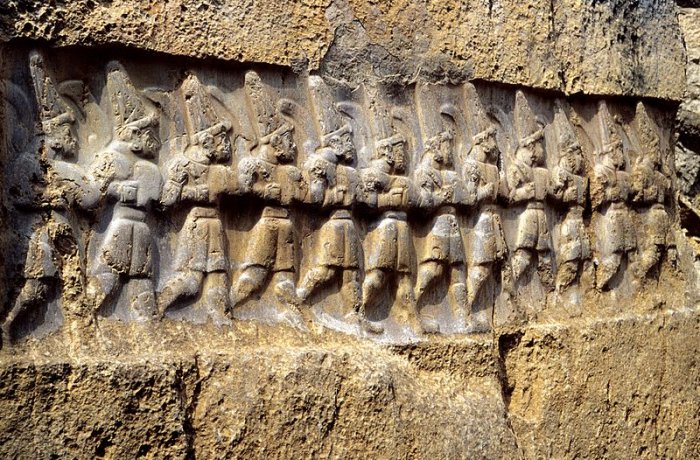Yazılıkaya: One Of The Most Striking Religious Shrines Of The Hittite Empire
A. Sutherland - AncientPages.com - The fascinating ancient Hittite sanctuary of Yazilikaya ('rock with writing') lies between rock outcroppings at the foot of the high ridge east of Hattusha, 170 kilometers east of Ankara and near the small town Boğazköy (Turkish: "Gorge Village") modern Boğazkale, Turkey.
Lion Gate, Hattusa, Turkey. Image credit: Bernard Gagnon - CC BY-SA 3.0
Archaeologists date the earliest settlement in the city of Boğazköy, which was discovered in 1834, to 3000 BC. Still, nothing is known about the identity of the first settlers of Boğazköy because there are no written documents that could shed light on the local history of this region.
However, remains of the ancient 'Great Fortress' (Büyükkale) on the east side of Boğazköy confirmed that it later became the acropolis of the Hittite kings.
The earliest written sources found at Boğazköy are clay tablets inscribed in cuneiform writing in the Old Assyrian language.
An open-air Hittite sanctuary, Yazilikaya, is one of the most striking religious shrines of the Hittite Empire (1400-1200 BC), and many gods and goddesses were worshiped there during this time.
Yazilikaya, Hittite sanctuary near Hattusa, Turkey, Chamber B Procession of the 12 Underworld Gods. Image credit: Klaus-Peter Simon - CC BY 3.0
Worshippers would pass through the temple and find themselves in the rock sanctuary with walls richly decorated with bas-reliefs depicting Hittite deities in pointed caps or magnificent tiaras on their heads.
Many rock reliefs exist in other Hittite sites, but they are smaller and more impressive than the galleries of gods at Yazilikaya. The reliefs in the shrine's main chamber include two long processions of gods that converge on a large rock face at center stage, where the famous Weather God of Heaven, Teshub, faces his consort.
Teshub was worshipped as the "King of Heaven, Lord of The Land of the Hatti." He is depicted as a bearded man, dressed in a kilt, with an ax in his belt, holding a spear in one hand and a symbolic flash of lightning in the other.
The gods are depicted on the west, and the goddesses on the east side of the gallery. Unfortunately, archaeologists have been able to identify only a few of these prominent figures.
Sharruma, the son of the two great gods renewing their marriage vows, stands right behind his mother and leads the line of divine ladies. On the west wall of the sanctuary, Shaushga, the Hittite version of the planet Venus as the goddess of war, marches with the men.
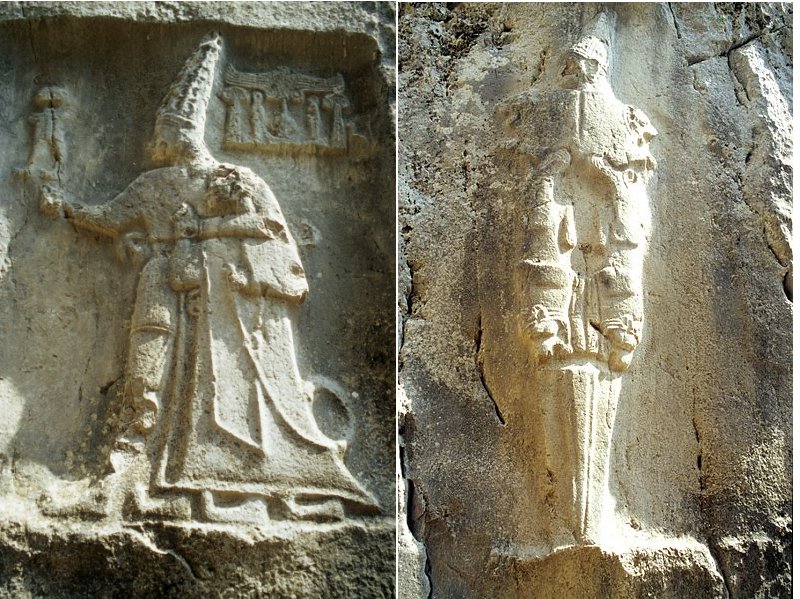 Left: Rock carving in Chamber B depicting god Sharruma and King Tudhaliya dated to around 1250 - 1220 BC. Image credit: Klaus-Peter Simon - CC BY 3.0; Right: Nergal, the underworld god in the era of Old Assyria and Old Babylonia. Image credit: Klaus-Peter Simon - CC BY 3.0.
Left: Rock carving in Chamber B depicting god Sharruma and King Tudhaliya dated to around 1250 - 1220 BC. Image credit: Klaus-Peter Simon - CC BY 3.0; Right: Nergal, the underworld god in the era of Old Assyria and Old Babylonia. Image credit: Klaus-Peter Simon - CC BY 3.0.
Archaeologists also recognized Telipinu, the son of the weather god and the patron god of vegetation, holding a twig or an ear of corn. The procession has many different winged figures, but only the Moon-god from Mesopotamia is recognizable. Interestingly, the carved hieroglyphics accompanying the gods at Yazilikaya identify the gods with Hurrian names. The Hurrians founded the kingdom of Mitanni southeast of the Anatolian plateau in northern Mesopotamia and eastern Syria.
Their language was not related to the Semitic peoples of Babylon or the Hittites.
Interestingly, the carved hieroglyphics accompanying the gods at Yazilikaya identify the gods with Hurrian names. The Hurrians founded the kingdom of Mitanni southeast of the Anatolian plateau in northern Mesopotamia and eastern Syria. Their language was not related to the Semitic peoples of Babylon or the Hittites.
Puduhepa, for example, the Hittite queen, came from Kizzuwatna, a Hurrian province in the southern lands of the Hittite empire, later known as Cilicia. The daughter of a priest and as a priestess herself, she brought tablets inscribed with the names of the gods to her Hittite husband. She was married to Hattushili III (1275— 1250 B.C.), who, along with their son, Tudhaliya IV (1250— 1220 B.C.), was ordered to carve the sculptures at Yazilikaya.
Yazilikaya Chamber B, Name Cartouche Tudhalija IV. Image credit: Klaus-Peter Simon - CC BY 3.0
His carved depiction is seen at the entrance to the sanctuary. He is dressed in the traditional long robes of the Hittite kings; he wears a curved sword and carries his pictograph symbol in his right hand.
Among other identified gods depicted in the wedding procession at Yazilikaya, there is Hepat, Teshub's bride and the goddess of cyclical renewal. Hepat was the great Hurrian Mother Goddess, and at the same, to Hittites, she was the Sun Goddess affiliated with the city of Arinna, the major cult center of this Hittite sun-goddess, also known as UTU Arinna or "Sun-Goddess of Arinna."
The great shrine at Yazilikaya and its marvelous sculptures, along with an ancient text: 'All the gods assembled and entered into the House of the Weather God,' prove that the Hittite kings celebrated a great festival of Heaven and Earth at the beginning of the year.
The Hittite New Year, which occurred in spring and probably coincided with the vernal equinox, was very important and widely celebrated, by the people of Mesopotamia.
Yazilikaya remains a vital historical moment at the height of the Hittite civilization.
Written by – A. Sutherland AncientPages.com Senior Staff Writer
Updated on Oct 1, 2023
Copyright © AncientPages.com All rights reserved. This material may not be published, broadcast, rewritten or redistributed in whole or part without the express written permission of AncientPages.com
Expand for referencesReferences:
M. Chase, Hebrew, Phoenicians, Hittites
E.C. Krupp, Skywatchers, Shamans, Kings
More From Ancient Pages
-
 Ancient Nomads You’ve Probably Never Heard Of Disappeared From Europe 1,000 Years ago. Now, DNA Analysis Reveals How They Lived
Featured Stories | Jun 20, 2024
Ancient Nomads You’ve Probably Never Heard Of Disappeared From Europe 1,000 Years ago. Now, DNA Analysis Reveals How They Lived
Featured Stories | Jun 20, 2024 -
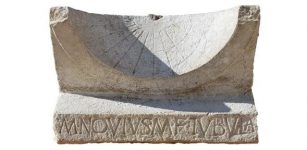 Rare 2,000-Year-Old Intact Sundial With Inscription Discovered In Italy
Archaeology | Nov 9, 2017
Rare 2,000-Year-Old Intact Sundial With Inscription Discovered In Italy
Archaeology | Nov 9, 2017 -
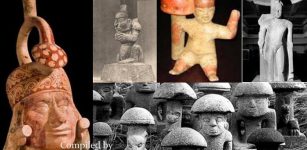 Mysterious Ancient Mushrooms In Myths And Legends: Sacred, Feared And Worshiped Among Ancient Civilizations
Featured Stories | Apr 26, 2023
Mysterious Ancient Mushrooms In Myths And Legends: Sacred, Feared And Worshiped Among Ancient Civilizations
Featured Stories | Apr 26, 2023 -
 Dwarfie Stane: Mysterious 5,000-Year-Old Rock-Cut Tomb On Dark Enchanted Island Of Hoy, Scotland
Featured Stories | Feb 21, 2023
Dwarfie Stane: Mysterious 5,000-Year-Old Rock-Cut Tomb On Dark Enchanted Island Of Hoy, Scotland
Featured Stories | Feb 21, 2023 -
 Groundbreaking Discovery Reveals High Cognitive Abilities In Humans Who Lived 170,000 Years Ago
Archaeology | Feb 7, 2022
Groundbreaking Discovery Reveals High Cognitive Abilities In Humans Who Lived 170,000 Years Ago
Archaeology | Feb 7, 2022 -
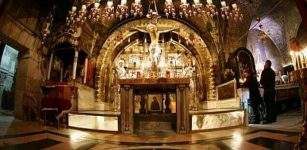 Jesus Christ’s Tomb Dates To Roman Emperor Constantine’s Era – Researchers Confirm
Archaeology | Dec 12, 2017
Jesus Christ’s Tomb Dates To Roman Emperor Constantine’s Era – Researchers Confirm
Archaeology | Dec 12, 2017 -
 Bezvodovka: Little Known Ancient Solar Observatory In Ukraine Reveals Its Secrets
Archaeoastronomy | Jan 4, 2017
Bezvodovka: Little Known Ancient Solar Observatory In Ukraine Reveals Its Secrets
Archaeoastronomy | Jan 4, 2017 -
 On This Day In History: Battle of Devil’s Hole Was Fought – On Sep 14, 1763
News | Sep 14, 2016
On This Day In History: Battle of Devil’s Hole Was Fought – On Sep 14, 1763
News | Sep 14, 2016 -
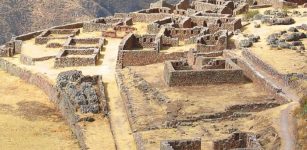 Beautiful Ancient City Of Pisac In The Sacred Valley, Peru – Incredible Inca Ruins
Featured Stories | Jun 22, 2017
Beautiful Ancient City Of Pisac In The Sacred Valley, Peru – Incredible Inca Ruins
Featured Stories | Jun 22, 2017 -
 Idiots Were Not Allowed To Vote In Ancient Athens
Ancient History Facts | May 30, 2016
Idiots Were Not Allowed To Vote In Ancient Athens
Ancient History Facts | May 30, 2016 -
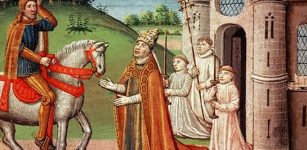 Medieval Warhorses Were Pony-Sized And Much Smaller Than Previously Thought
Archaeology | Jan 11, 2022
Medieval Warhorses Were Pony-Sized And Much Smaller Than Previously Thought
Archaeology | Jan 11, 2022 -
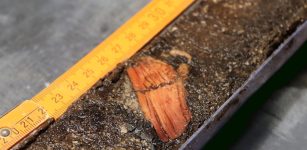 Evidence Europeans Used Slash-And-Burn Methods 9,500 Years Ago For Agriculture Purposes
Archaeology | May 18, 2022
Evidence Europeans Used Slash-And-Burn Methods 9,500 Years Ago For Agriculture Purposes
Archaeology | May 18, 2022 -
 Ancient Mysteries Of Japan – Remarkable Story Of An Unknown Civilization And Lost Knowledge – Part 2
Ancient Mysteries | Sep 2, 2019
Ancient Mysteries Of Japan – Remarkable Story Of An Unknown Civilization And Lost Knowledge – Part 2
Ancient Mysteries | Sep 2, 2019 -
 Forgotten Ancient Empire That Extended Far Beyond America To Iceland And Its Mysterious Inscriptions
Ancient Mysteries | May 6, 2021
Forgotten Ancient Empire That Extended Far Beyond America To Iceland And Its Mysterious Inscriptions
Ancient Mysteries | May 6, 2021 -
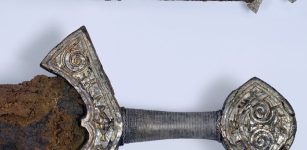 Mystery Of The Langeid Viking Sword And Its Undeciphered ‘Magical’ Inscriptions
Artifacts | Jun 4, 2022
Mystery Of The Langeid Viking Sword And Its Undeciphered ‘Magical’ Inscriptions
Artifacts | Jun 4, 2022 -
 Remarkably Well-Preserved Afragola Village After The Vesuvio Eruption 4,000-Years Ago
Archaeology | Sep 29, 2022
Remarkably Well-Preserved Afragola Village After The Vesuvio Eruption 4,000-Years Ago
Archaeology | Sep 29, 2022 -
 Medusa – Cursed By Athena And Killed By Perseus
Featured Stories | Jul 30, 2018
Medusa – Cursed By Athena And Killed By Perseus
Featured Stories | Jul 30, 2018 -
 Major Earthquake Struck The Atacama Desert 3,800 Years Ago, Forcing Hunter-Gatherers To Move Inland
Archaeology | Apr 7, 2022
Major Earthquake Struck The Atacama Desert 3,800 Years Ago, Forcing Hunter-Gatherers To Move Inland
Archaeology | Apr 7, 2022 -
 Rocket Launch Into Space At Sibiu, Romania Took Place In 1555 – Sibiu Manuscript
Ancient Mysteries | May 29, 2014
Rocket Launch Into Space At Sibiu, Romania Took Place In 1555 – Sibiu Manuscript
Ancient Mysteries | May 29, 2014 -
 Secrets Of Quipu – One Of The Most Mysterious Phenomena That Existed In Odd Number Of Dimensions
Featured Stories | Feb 9, 2015
Secrets Of Quipu – One Of The Most Mysterious Phenomena That Existed In Odd Number Of Dimensions
Featured Stories | Feb 9, 2015


